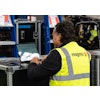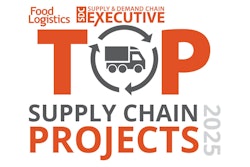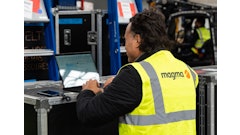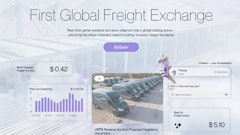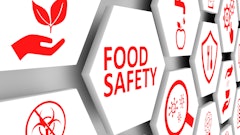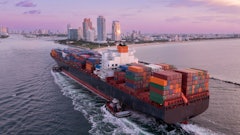
When it comes to food logistics, safe and efficient transportation practices can be the deciding factor between a seamless delivery and a costly loss. According to the Food and Agriculture Organization of the United Nations, 13% of food loss occurs within the supply chain before products even reach consumers. Between handling, processing, and transportation, the stakes are high, and every mile traveled carries significant responsibility. Restaurant and retail partners often require food distributors to meet specific quality and safety standards, including temperature management, delivery timelines, and secure handling of products. To meet these standards and reduce losses, fleets in food logistics are turning to video safety and video telematics applications to encourage safer driving and better risk management.
Building a safety-first culture
While telematics plays a key role in managing risks and safety protocol on the road, technology certainly can’t do it all—it requires a human element. Creating a true safety-first culture requires continuous training and commitment at every level of the organization. Many food handling companies conduct regular safety meetings covering everything from defensive driving practices, basics of equipment handling, and customer interaction.
Using video telematics helps companies gain unparalleled insight into driver behavior, enabling managers to coach drivers and engage in a positive dialogue that improves habits effectively. Companies are also encouraged to prioritize equipment maintenance and best handling practices in warehouses, hold annual safety meetings, and cover topics like slips, trips and falls, the “Get Out and Look” principle, and the 5Seeing System. This collaborative approach empowers the team and fosters a safer, more efficient work environment for everyone.
Turning to video telematics: A technological safety net
This year’s return-to-office mandate by numerous businesses and organizations has led to an influx of traffic as vehicles crowd roadways, increasing the number of collisions, distractions, and visual impairments. Risks like these continue to jeopardize fleets, and video telematics is taking the lead in helping ensure drivers are safe during deliveries.
Cab and forward-facing cameras offer companies a new level of visibility into fleet operations that go beyond a simple dashcam. With access to real-time data, fleet managers can identify emerging risks and take corrective action swiftly, reducing product loss and ensuring safe, on-time deliveries. Utilizing comprehensive video safety solutions powered by machine vision and artificial intelligence (MV+AI) helps companies detect and address risky driving with targeted coaching to help prevent accidents.
However, not all risk resides in a driver’s behavior. Seasonal weather is an element all fleet managers and drivers must manage, and adverse weather such as snow, fog, rainfall or even the summer heat poses significant risk. According to the USDOT, one in five crashes in the United States are weather related, underscoring the importance that fleets must stay proactive to avoid weather-impacted routes when able.
Perishables cannot sit idle on the side of the road waiting for a weather event to pass. Now, sophisticated telematics solutions that leverage advanced geospatial technologies and MV+AI can send localized weather alerts. This enables food distributors to make smart rerouting decisions, while maintaining safety and operational excellence even amid the effects of weather. Advanced technology that combines telematics, AI and weather alerts provides real-time weather warnings, forecasts, radar images, temperature, wind speed, wind gusts, traffic conditions, and even basic road views, enabling management to make informed decisions that protect drivers and assets.
And while ice and snow are at bay in the summer season, summer’s high temperatures pose a threat to cargo. Pre-cooling trailers before the product is loaded ensures temperature handling compliancy while saving fuel.
Looking ahead: Future trends in fleet safety
It is no secret that motorist distractions, aggression, and/or impairments are not declining, and fleets are feeling pressure to get ahead of potential dangers by proactively identifying unsafe driving behaviors before they lead to accidents. Coaches and managers that leverage the latest AI and video telematics to identify physical ailments that could be a safety issue will be miles ahead in their safety and driver wellness programs. This year especially, food distribution companies must take proactive steps in reinforcing the safety and wellness of their drivers, who should be considered “industrial athletes,” with physical and challenging jobs inside and outside of the cab.
The future of food logistics goes far beyond the “check the box” mentality of just meeting regulatory standards—it’s a matter of preserving product quality and public trust while ensuring safety of those behind the wheel. By integrating a safety-first culture that includes advanced telematics technology, companies are building trust as reliable partners in food distribution that focus on both the safety of their cargo and their drivers.
